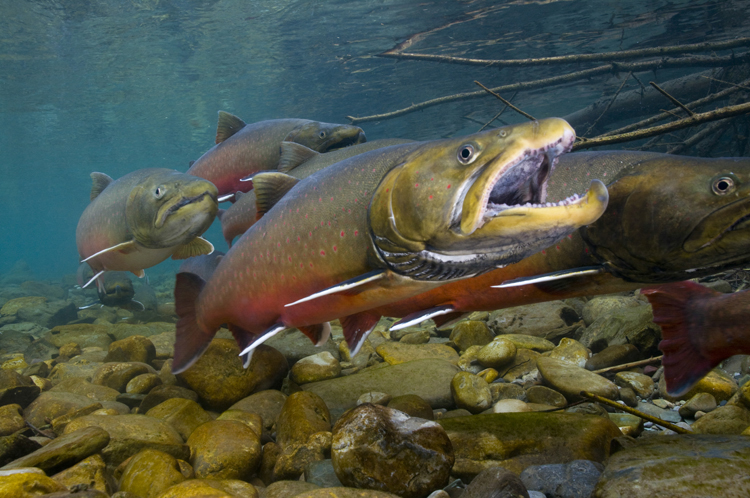BOISE, Idaho — Federal officials are releasing a plan Thursday to recover struggling bull trout populations in five Western states with the goal of lifting Endangered Species Act protections for the fish.
The U.S. Fish and Wildlife Service proposes lifting protections individually in six recovery units spread over Idaho, western Montana, Washington, Oregon and a tiny portion of northern Nevada when specific requirements are met. The agency said the areas contain distinct populations of bull trout with unique characteristics.
“We think the approach is tactical and appropriate,” said Steve Duke, bull trout recovery planning coordinator for the agency. “We think it focuses on what still needs to be done, and it lets local agencies and those with managerial oversight focus on those areas without having to look at the larger distribution of bull trout.”
Bull trout are a cold water species listed as threatened in the Lower 48 states in 1999. Experts say cold, clean water is essential for the fish.
The plan doesn’t dictate actions but looks at ways to keep water in streams habitable for bull trout. It considers warming waters due to climate change that force some populations into upper regions of river systems, Duke said.
Under the plan, the overall requirement to lift protections is stable populations of bull trout throughout each of the recovery units while reducing primary threats. Risks to the fish include livestock grazing that damages streams, past harmful logging practices, diversion dams and isolated populations.
Bull trout survival also is threatened by non-native brook trout. If the species mate, a hybrid fish results.
The draft plan stems from the agency’s settlement last year of a lawsuit by two environmental groups — the Alliance for the Wild Rockies and Friends of the Wild Swan.
Michael Garrity of Alliance for the Wild Rockies said he’s concerned the agency is looking to define bull trout differently in different regions so federal protections could be removed in some areas while fish are still in trouble in other areas. He said his organization would be against that plan.
“We’re optimistic they’ll listen to us,” Garrity said. “But we’re optimistic because we’ve sued them on bull trout about a dozen times and won each time. If they don’t follow the best available science, we won’t hesitate to sue again.”
The plan eyes potential delisting by area. But it says that could only happen after a formal process to designate bull trout in the different units as distinct population segments.
The fish occupies about 60 percent of its former range, which has remained steady since it received federal protection, Duke said. Their presence is often a sign of a healthy river system because of the high water quality the fish requires, he said.
Public comments will be taken through July 20, which the agency plans to use to prepare a final plan by Sept. 30.
